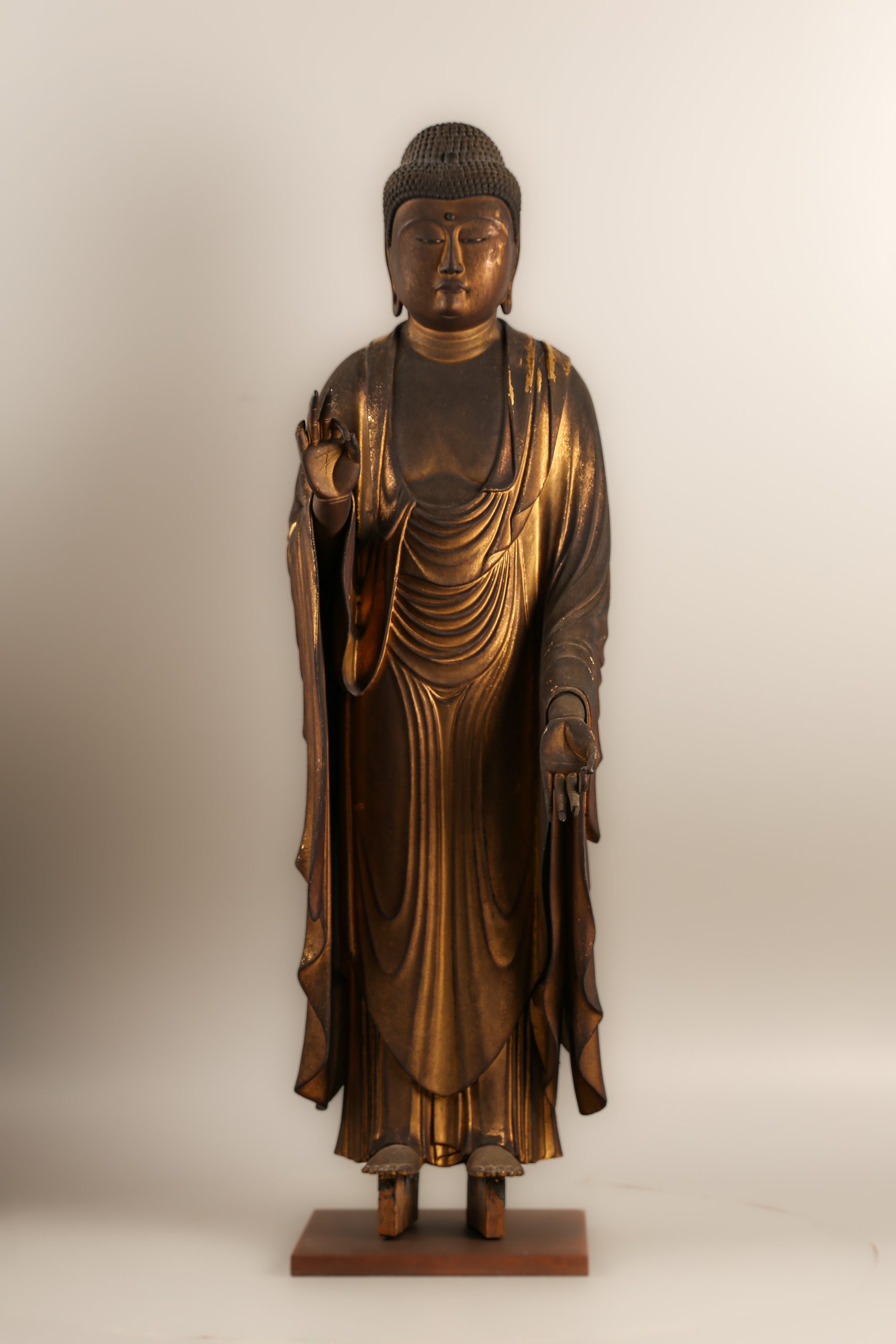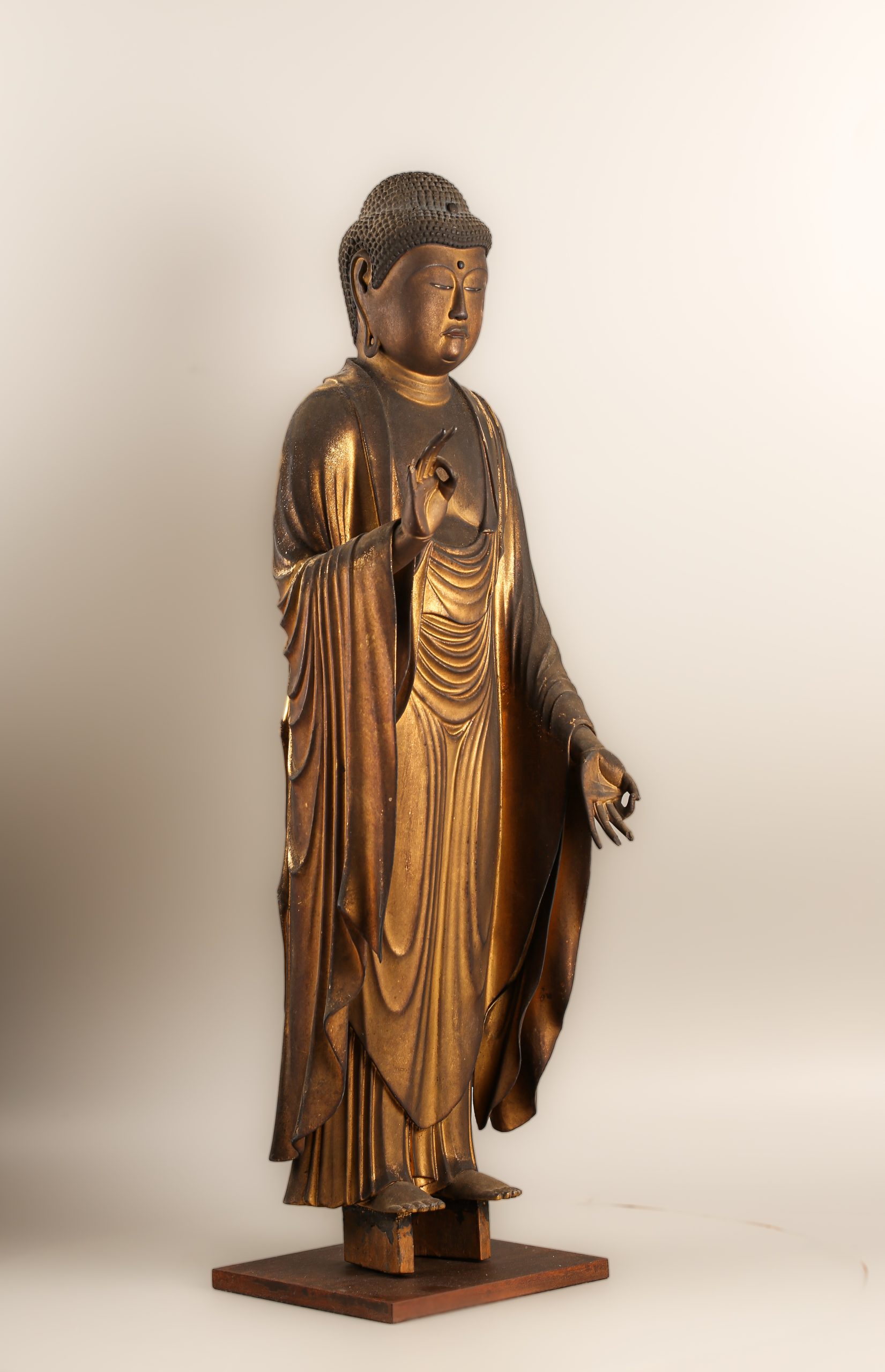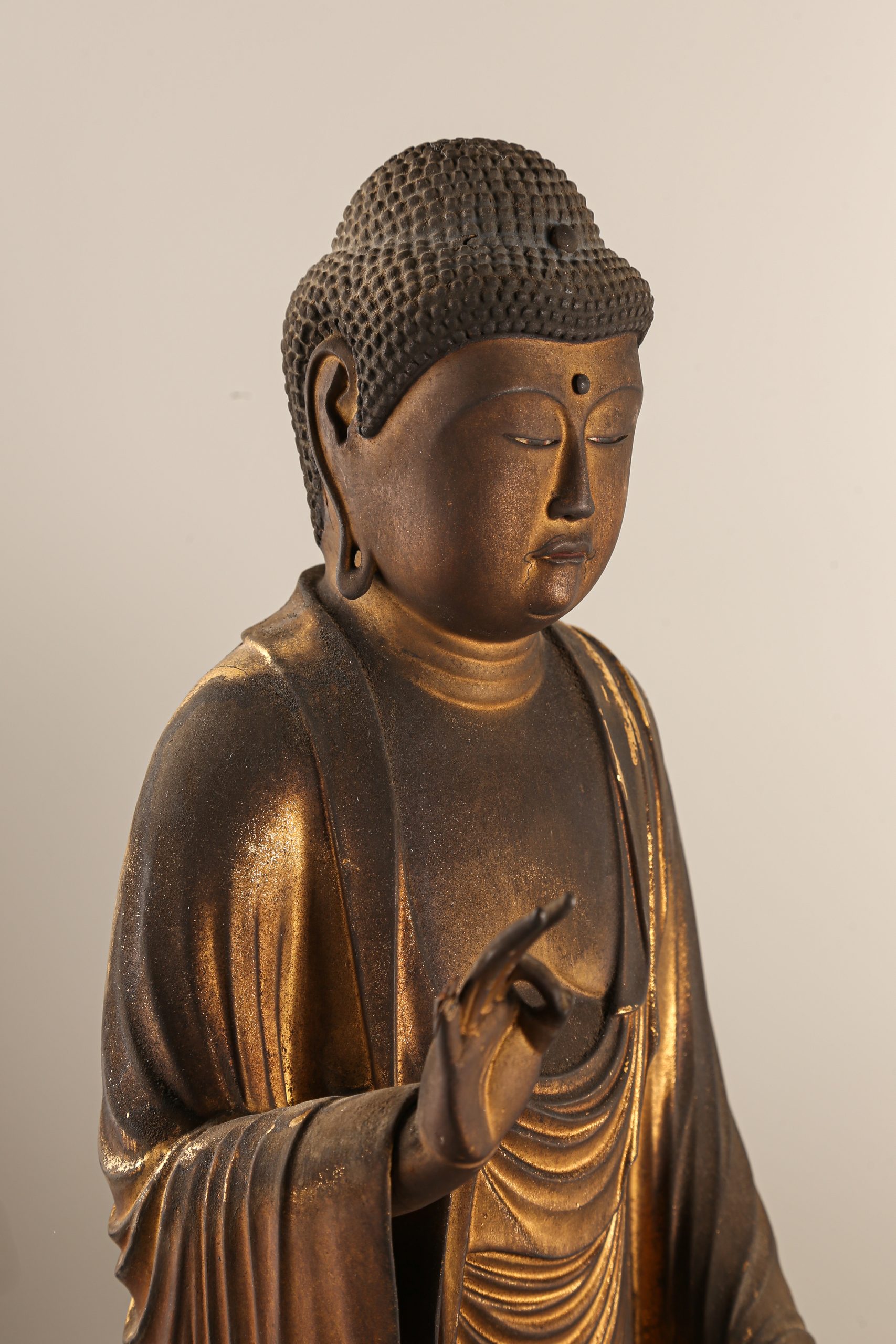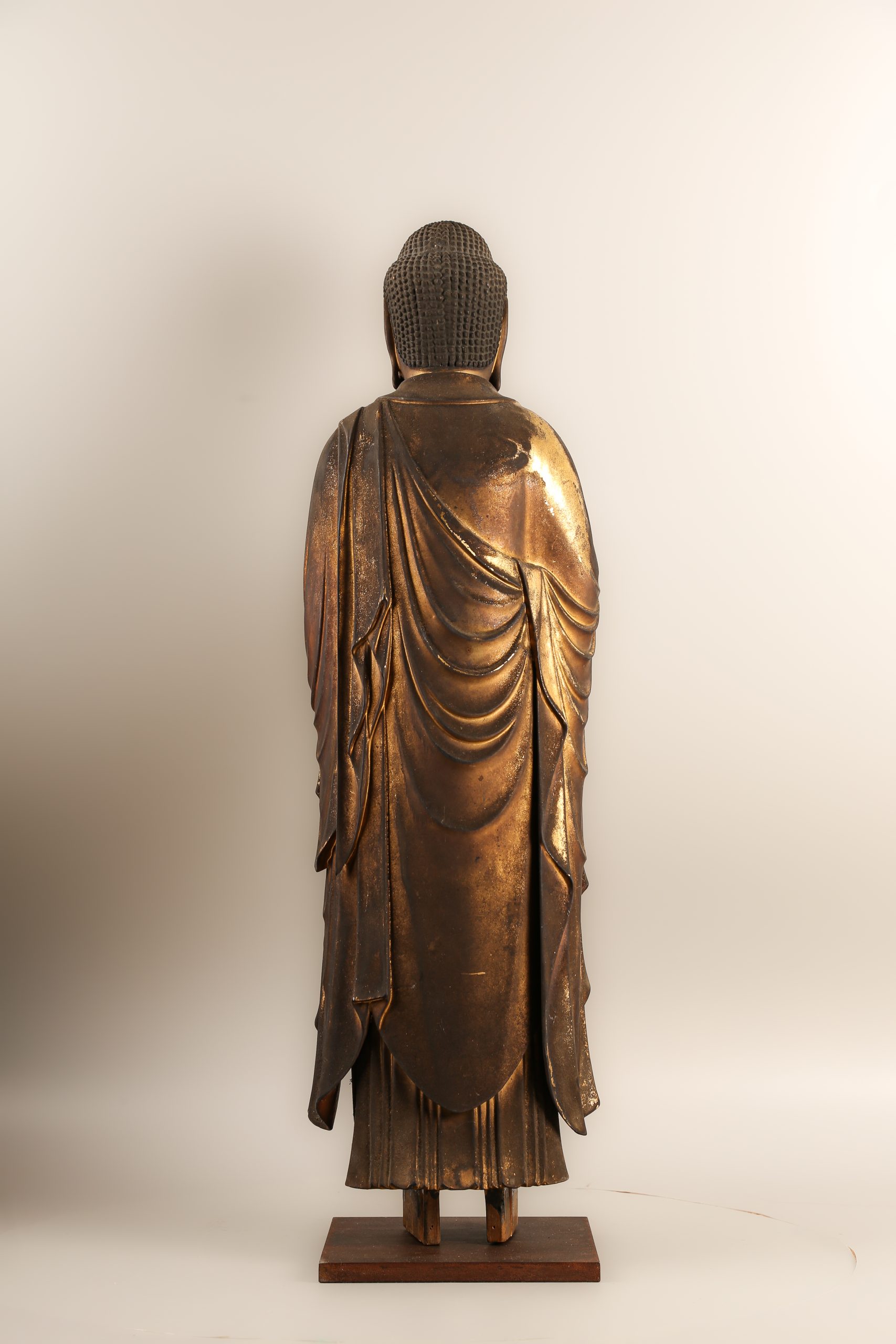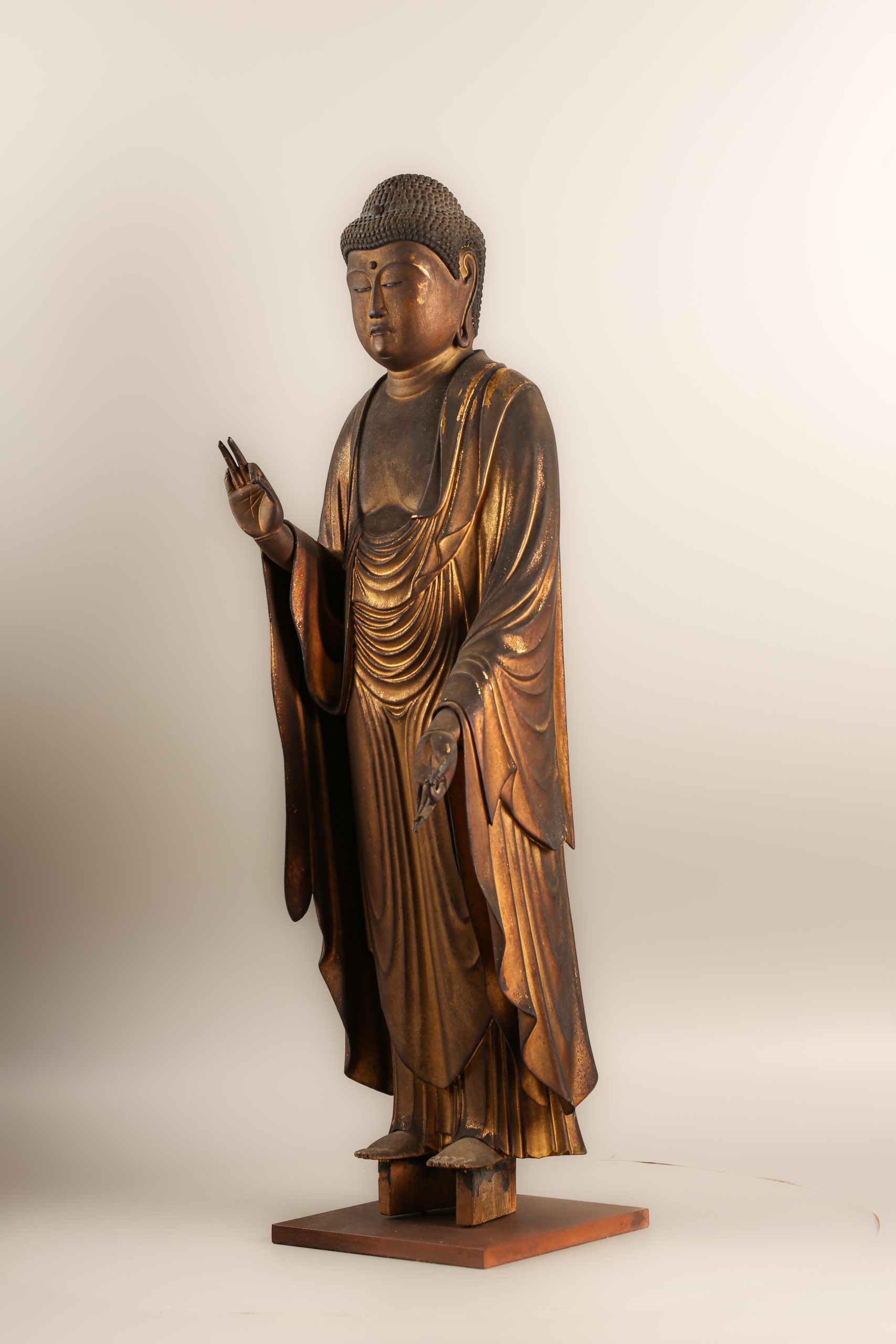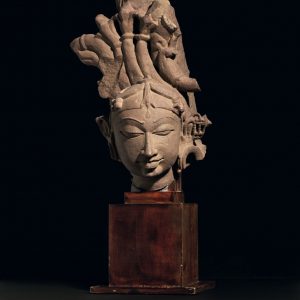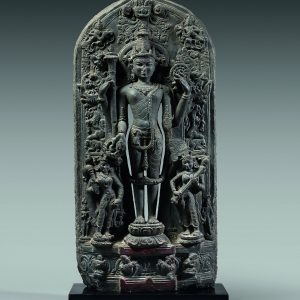Standing Amida
35 000,00€
Gilded wood
Early Edo period, 18th Century
Japan
H. 55 cm
Description
This gilded wooden sculpture depicts Amitabha (Amida in Japanese) standing in a delicately folded robe. The right arm is raised and the left arm is extended, the index finger and thumb of each hand forming a circle representing the mudra of the teaching, welcoming the believer into the Land of bliss, over which he rules.
The head has gyokugan, i.e. inlaid crystal eyes. The face has a calm expression, with almost closed eyes, under delicately arched eyebrows. The hair is arranged in rows of curls that also cover the ushnisha, the protrusion on the head. The drapery falls to the feet in elegant and refined folds. The great serenity that emanates from the sculpture corresponds to codes of representation found in 11th century Japan.
Amitabha Buddha has been venerated in Japan since the 7th century. The Buddha of the Future, also called “the immeasurable light” (hence the custom of gilding the statues), is associated with Mahayana Buddhism and the Pure Land Buddhism. It was Shākyamuni Buddha who introduced to our world the Land of bliss of Amitābha Buddha, a pure, virtuous, blissful world, devoid of evil, suffering and spiritual and material impurities, which is called the Pure Land and which becomes the name of a widespread school in the Far East.
Amida’s attribute is a lotus, and he is sometimes represented in the trinity – with Bodhisattvas bodyguards – Kannon (Avalotitesvara) and Seishi (Mahasthamaprata).
This is a remarkably large and well-preserved representation of the skill of Japanese crafts.
Provenance: Belgian private collection.

